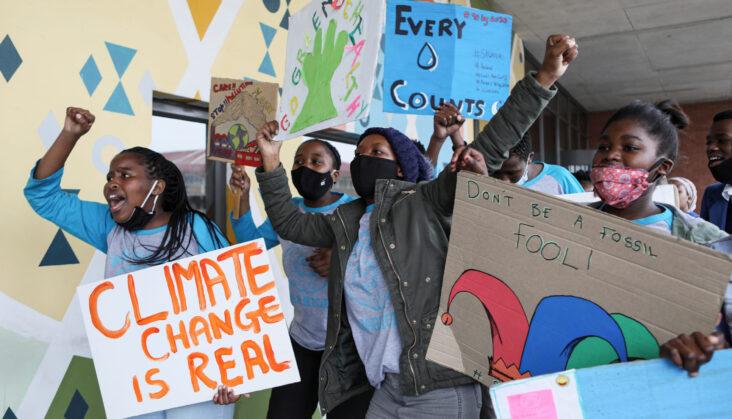Africa-Press – Mauritius. History has taught us that the advent of a global pandemic is correlated to climatic change. And in the case of COVID-19, it has been a human-induced change. In the year 541 CE, the Eastern Roman Empire was in the midst of a major transformation led by its dynamic emperor Justinian I (527–565 CE).
The Plague of Justinian, the first known global pandemic, was caused by Yersinia pestis bacterium and spread by the black rat (Rattus rattus).
Those rats had arrived in Constantinople in 542 CE on the grain ships and carts sent to the capital city of the Roman Empire. Stored in vast warehouses, the grains provided a perfect breeding ground for the fleas and rats, crucial to the transmission of plague.
25 million corpses later, the Roman Empire was decimated.
The outbreak continued to sweep throughout the eastern Mediterranean region of the world for another 225 years, leading to the premature death of up to a quarter of the human population in the region before finally disappearing in 750 CE.
Like Plague of Justinian, the Black Death, was caused by the Yersinia pestis, and also spread by infested fleas riding the backs of rats from Asia through the Middle East to Europe through trade routes across Italy.
It first exploded in Europe between 1347 and 1351, killing between 30% to 60% of Europe’s population. Like its medieval predecessors that took place long before the era of globalisation, COVID-19 has moved from country to country by means of travellers ably aided by supersonic aircrafts.
Similarly, the current pandemic has spread more rapidly through urban populations because of the greater density and close proximity of people. Nearly no one is immune to COVID-19.
It affects all strata of the society while disproportionately impacting the poor and disadvantaged people. There appears to be a strong correlation between sudden climatic shifts and the occurrence of the two great Yersinia pestis plague episodes.
A 2013 article on climatic change noted that the pandemics are linked to changes in human populations, atmospheric carbon dioxide, and global climate. Most alarming is the concern among scientists that global temperature rise and climate change could awaken previously dormant viruses and pathogens.
Similar opinion at the Proceedings of the National Academy of Sciences concurred that climate-driven outbreak of Yersinia pestis in Asian rodent plague reservoirs are significantly associated with new waves of plague arriving into Europe through its maritime trade network with Asia.
The Plague of Justinian was preceded by the climate anomaly of 535-536 CE, which darkened the skies worldwide for several years, ushering in an era of cool weather due to particulate matter in the atmosphere, and resulted in mass droughts followed by extensive flooding in most areas of Eurasia.
The similar climatic vicissitudes that heralded the beginning of the Little Ice Age have been attributed to the incidence of the Black Death. Our climate has changed further since these two great pandemics.
Today, human induced climate change, caused by the release of greenhouse gases (GHGs) into the atmosphere, is arguably the most systemic threat to existence on planet Earth.
According to the Intergovernmental Panel on Climate Change (IPCC), the fingerprint of anthropogenic climate change is increasingly seen in a diverse array of meteorological and hydrological phenomena around the world.
There is also strong evidence that changing weather patterns associated with climate change are shifting the geographic range, seasonality, and intensity of transmission of selected climate-sensitive infectious diseases.
Recent advances in climate science have led to matured attribution of incidence of infectious disease to changing climate.
It is an irrefutable fact that climate change has introduced additional complications to the infectious disease dynamics, causing concerns that in the future, changes in climate may increase the spread of diseases and threaten human health.
Climate change, as a pandemic enabler and accelerant, impacts the whole process of a disease’s development including the survival, reproduction, or distribution of disease pathogens and their hosts, as well as the availability and means of such pathogens’ transmission environments.
Medical historians tell us that great plague attacks humankind, every 100 years or so; some are lethal and others are less so. However, most alarming is the concern among scientists that global temperature rise and climate change could awaken previously dormant viruses and pathogens that have been undetected by humanity – leaving us completely unprotected against them.
LISTEN Coronavirus: 5 key lessons from the 2014 Ebola outbreak Emerging and re-emerging infectious diseases are now occurring at unprecedented speed.
According to the World Health Organization (WHO), the world has witnessed the emergence of several disease outbreaks and epidemics caused by more than 20 infectious agents over the past decade.
These include, in addition to COVID-19, SARS, MERS, Ebola, Chikungunya, avian flu, Swine flu, and Zika Virus.
COVID-19 has weakened the social order, greatly affecting institutional systems necessitating what commentators call ‘build back better’. It is crucial that the urgency with which the international community galvanise efforts towards combatting the COVID-19 pandemic extend to fight climate change in order to avoid more climate-induced infectious diseases.
This year’s Global Day of Climate Action on 25 September, was an opportunity to demand public policies towards mitigating the likelihood that our changing climate will let loose other novel microbes.
For More News And Analysis About Mauritius Follow Africa-Press







